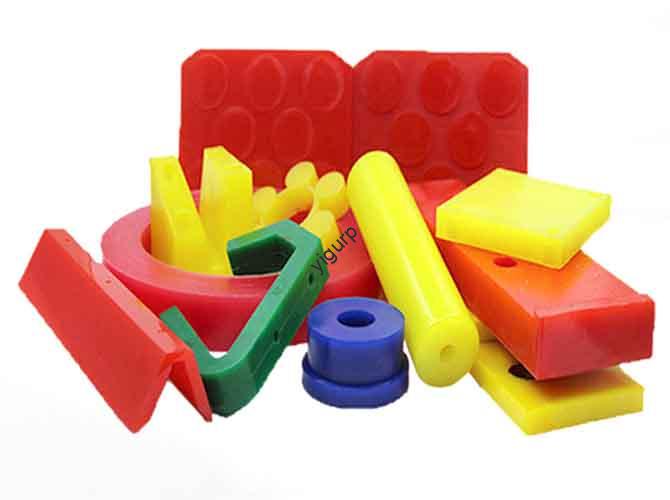When 3D printing functional parts—whether for prototypes, Промышленные компоненты, or end-use products—plastic strength is the make-or-break factor for performance. A part that lacks sufficient strength may crack under load, fail in high temperatures, or wear out quickly. This article breaks down key high-strength 3D printing plastics, their strength metrics, and how to select the right one for your project.
1. Ключевые метрики: How to Measure Plastic Strength for 3D Printing?
Прежде чем сравнивать материалы, очень важно понимать основной показатель, используемый для оценки силы: предел прочности. Измеряется в мегапаскалях (МПА), он представляет собой максимальную силу, которую может выдержать материал, прежде чем он сломается при растяжении..
| Метрика силы | Определение | Relevance for 3D Printing |
| Предел прочности (МПА) | Force required to break a material under tension | Determines if a part can handle pulling or stretching loads (НАПРИМЕР., скобки, петли) |
| Воздействие сопротивления | Ability to absorb energy without breaking (often tested via Izod/Charpy tests) | Critical for parts that may experience shocks (НАПРИМЕР., ручки инструмента, Автомобильные компоненты) |
| Теплостойкость (° C.) | Temperature at which strength drops by 50% (HDT, Тепловая температура) | Essential for parts used in high-heat environments (НАПРИМЕР., Компоненты двигателя, 3D Принтер Сопла) |
2. Высокопрочный пластик для 3D-печати: Сравнение таблицы
Below is a detailed breakdown of 5 common high-strength 3D printing plastics, including their tensile strength, key features, и идеальные приложения. This table helps you quickly match materials to your project’s strength needs.
| Пластиковый тип | Tensile Strength Range (МПА) | Ключевые функции | Идеальные приложения |
| Полилактановая кислота (Плата) | 40–60 | Good dimensional stability; низкая деформация; легко печатать; экологически чистый (биоразлагаемый) | Low-load prototypes (НАПРИМЕР., mechanical part models, Электронные оболочки устройства) |
| Акрилонитрил-бутадиен-стирол (АБС) | 30–50 | Сбалансированная сила & стойкость; Хорошая теплостойкость (~90–110°C); воздействие | Mid-load parts (НАПРИМЕР., Компоненты автомобильной внутренней части, ручки инструмента, структурные рамки) |
| Поликарбонат (ПК) | 60–70 | Exceptional impact resistance; Высокая теплостойкость (~130–140°C); прозрачный | Высокая сила, high-heat parts (НАПРИМЕР., аэрокосмические компоненты, Корпуса медицинского устройства, safety covers) |
| Нейлон (А) | 50–80 (varies by type) | Отличная износостойкость; устойчивость к усталости (обрабатывает повторяющиеся нагрузки); Хорошая гибкость | Высокая одежда, repetitive-load parts (НАПРИМЕР., передачи, подшипники, sports equipment components) |
| Carbon Fiber-Reinforced Composites | 100–1,000+ | Extremely high strength & жесткость; легкий вес (50% легче, чем сталь); теплостойкий | Ультра-высокая сила, легкие детали (НАПРИМЕР., aerospace structural parts, Высокопроизводительные автомобильные компоненты, racing gear) |
3. Как правильно выбрать высокопрочный пластик? (Пошаговое руководство)
Selecting the best plastic for your 3D print isn’t just about picking the highest tensile strength. Follow this linear, question-driven process to align material choice with your project’s unique needs:
Шаг 1: Определите свой приоритет силы
Просить: What type of stress will the part face?
- Tension (тянет): Prioritize higher tensile strength (НАПРИМЕР., Нейлон для передач, carbon fiber composites for structural parts).
- Влияние (shocks): Choose materials with strong impact resistance (НАПРИМЕР., PC for safety covers, ABS for tool handles).
- Нагревать + сила: Opt for heat-resistant plastics (НАПРИМЕР., PC for high-temp components, carbon fiber composites for extreme environments).
Шаг 2: Фактор практичности печати
Even the strongest plastic won’t work if it’s hard to print. Например:
- Новички: Начните с Плата (низкая деформация, легко печатать) for low-load prototypes.
- Advanced users: Try ПК или нейлон (require heated enclosures to prevent warping) for high-strength parts.
Шаг 3: Балансовая стоимость & Производительность
- Budget-limited projects: Плата (бюджетный) или АБС (mid-cost) work for most prototypes.
- High-performance needs: Инвестировать в композиты из углеродного волокна (higher cost but unmatched strength-to-weight ratio) only if critical to the part’s function.
4. Взгляд Yigu Technology на высокопрочные пластики для 3D-печати
В Yigu Technology, we often advise clients to avoid over-specifying plastic strength for 3D printing. Many projects don’t need the highest-tensile materials—for example, a display prototype can use PLA (40–60 MPa) instead of carbon fiber (100+ МПА), сокращение расходов 60% without sacrificing performance. Для функциональных частей, we recommend testing with a “baseline material” first: use ABS for mid-load parts, then upgrade to PC or nylon only if real-world testing reveals strength gaps. This approach ensures clients get durable parts without unnecessary expenses, while our in-house printing team optimizes settings (НАПРИМЕР., Слой адгезии, плотность заполнения) to maximize the chosen plastic’s strength.
Часто задаваемые вопросы: Общие вопросы о прочности пластика для 3D-печати
- Q.: If PLA has higher tensile strength than ABS (40–60 MPa vs. 30–50 МПа), why use ABS for functional parts?
А: While PLA has higher tensile strength, ABS offers better toughness and heat resistance. PLA becomes brittle at <0°C and softens at ~60°C, making it unsuitable for parts exposed to temperature changes or impacts—areas where ABS excels.
- Q.: Can I increase the strength of a 3D-printed part without changing the plastic?
А: Да. Adjusting printing settings like плотность заполнения (higher = stronger, НАПРИМЕР., 80–100% for load-bearing parts) и высота слоя (thinner layers = better layer adhesion) can boost strength by 20–40%. Adding reinforcement (НАПРИМЕР., inserting metal rods into PLA brackets) also works for high-load needs.
- Q.: Is carbon fiber-reinforced plastic always the best choice for high-strength parts?
А: Нет. It’s overkill for low-to-mid load parts (НАПРИМЕР., Небольшие шестерни) and has drawbacks: Это дорого, abrasive to 3D printer nozzles (requires hardened steel nozzles), and is less flexible than nylon. Use it only when you need both ultra-high strength and lightweight properties.
